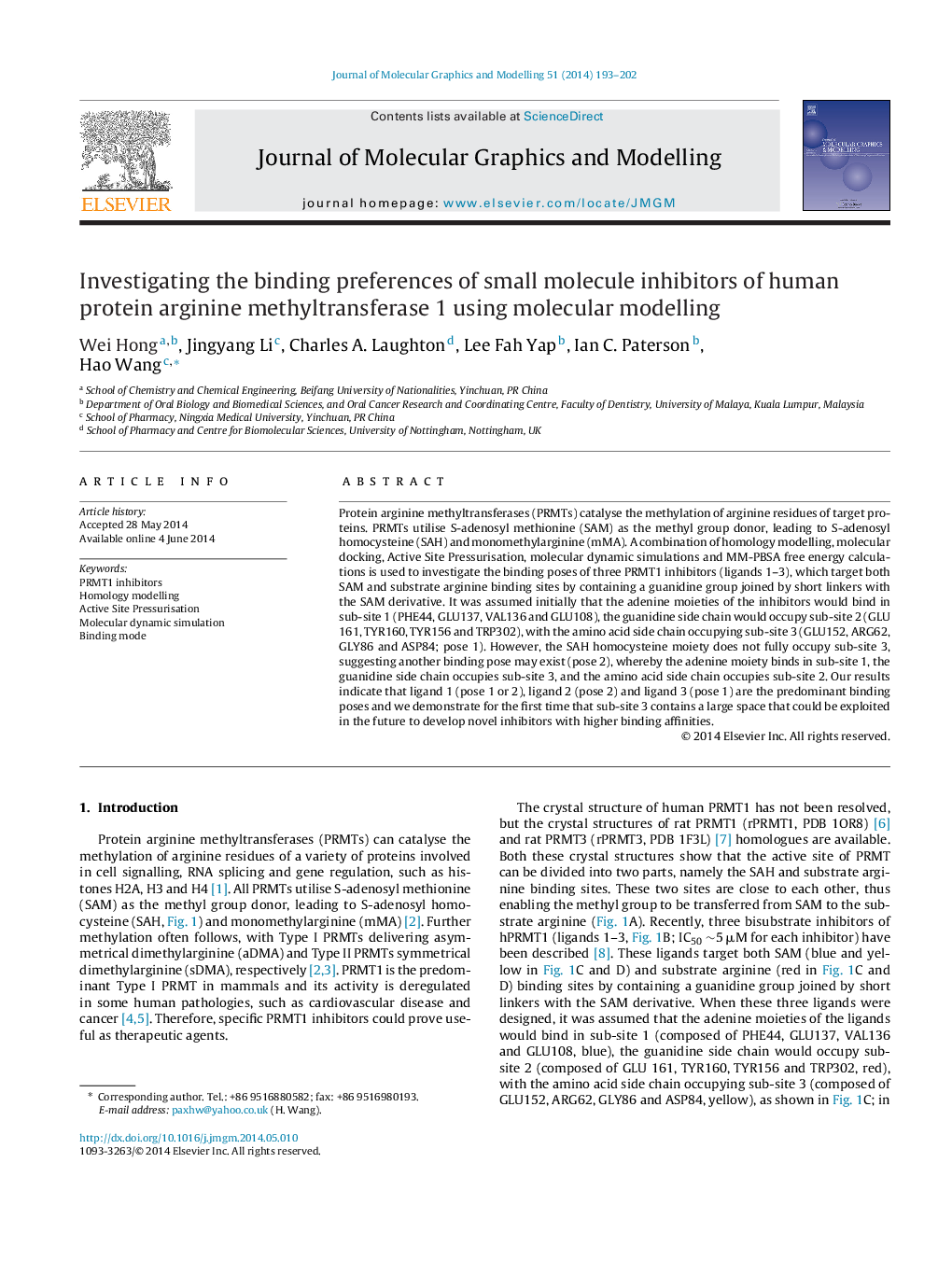| کد مقاله | کد نشریه | سال انتشار | مقاله انگلیسی | نسخه تمام متن |
|---|---|---|---|---|
| 444263 | 692951 | 2014 | 10 صفحه PDF | دانلود رایگان |
• Homology model of human protein arginine methyltransferase 1 was built.
• MD simulation and ASP were used to consider receptor flexibility.
• Cavity around ASP84 was proposed as a potential binding site.
• The predominant binding poses of known ligands were proposed.
Protein arginine methyltransferases (PRMTs) catalyse the methylation of arginine residues of target proteins. PRMTs utilise S-adenosyl methionine (SAM) as the methyl group donor, leading to S-adenosyl homocysteine (SAH) and monomethylarginine (mMA). A combination of homology modelling, molecular docking, Active Site Pressurisation, molecular dynamic simulations and MM-PBSA free energy calculations is used to investigate the binding poses of three PRMT1 inhibitors (ligands 1–3), which target both SAM and substrate arginine binding sites by containing a guanidine group joined by short linkers with the SAM derivative. It was assumed initially that the adenine moieties of the inhibitors would bind in sub-site 1 (PHE44, GLU137, VAL136 and GLU108), the guanidine side chain would occupy sub-site 2 (GLU 161, TYR160, TYR156 and TRP302), with the amino acid side chain occupying sub-site 3 (GLU152, ARG62, GLY86 and ASP84; pose 1). However, the SAH homocysteine moiety does not fully occupy sub-site 3, suggesting another binding pose may exist (pose 2), whereby the adenine moiety binds in sub-site 1, the guanidine side chain occupies sub-site 3, and the amino acid side chain occupies sub-site 2. Our results indicate that ligand 1 (pose 1 or 2), ligand 2 (pose 2) and ligand 3 (pose 1) are the predominant binding poses and we demonstrate for the first time that sub-site 3 contains a large space that could be exploited in the future to develop novel inhibitors with higher binding affinities.
Figure optionsDownload high-quality image (256 K)Download as PowerPoint slide
Journal: Journal of Molecular Graphics and Modelling - Volume 51, June 2014, Pages 193–202
